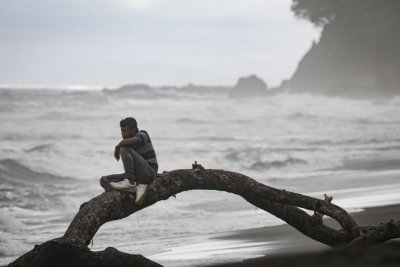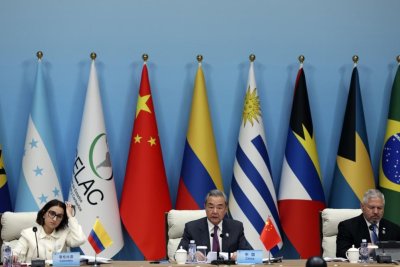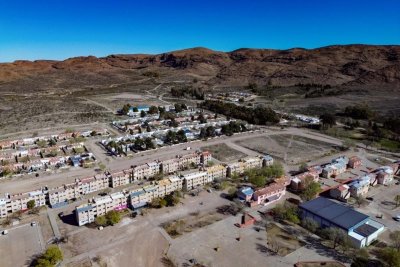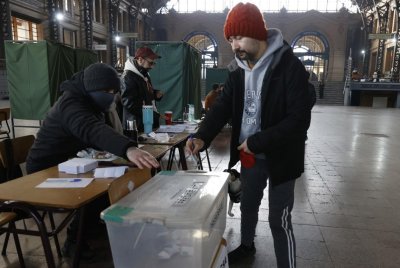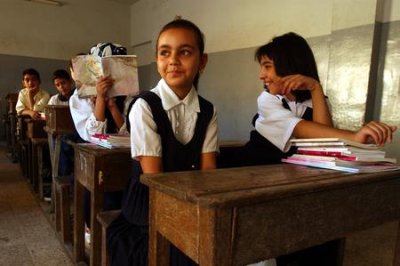Eddie Palmieri, a champion of Latin jazz, dies at 88
Eddie Palmieri, the Grammy-winning Nuyorican pianist, bandleader and composer who helped innovate Afro-Caribbean music in the States and transform the New York salsa scene, died on Wednesday. He was 88.
According to a post on his official Instagram, Palmieri passed away in his Hackensack, N.J., home. The New York Times confirmed via his youngest daughter, Gabriela Palmieri, that his death came after “an extended illness.”
Multiple celebrities chimed in to pay their respects, including Spike Lee, Ramon Rodriguez and representatives from Fania Records, the pioneering New York salsa label, also released a statement.
“[On Wednesday], Fania Records mourns the loss of the legendary Eddie Palmieri, one of the most innovative and unique artists in music history,” the statement said. Palmieri briefly recorded music with the label but also released music under Tico, Alegre, Concord Picante, RMM and Coco Records.
Others took to social media to mourn the loss, including David Sanchez, a Grammy-winning jazz tenor saxophonist from Puerto Rico, who uploaded a slideshow of photographs of the two. Sanchez recounted the time when his soprano saxophone was stolen — and Palmieri helped him pay for a new one. “Your being and your music will continue to live on in the hearts of many,” Sanchez wrote in the Instagram caption.
Palmieri’s contemporary Chuchito Valdes, a Grammy-winning Cuban pianist and bandleader, also chimed in with an Instagram post lamenting the loss: “A sad day for music. One of the greatest of all time is gone, an innovator. The man who revolutionized salsa and Latin jazz. My great friend.”
Born on Dec. 15, 1936, in East Harlem to Puerto Rican parents from Ponce, Palmieri was the younger brother of Charlie Palmieri, the late piano legend known as the “Giant of the Keyboards.”
The family later moved to the South Bronx, where they opened up a luncheonette called “Mambo”: a name chosen by young Eddie, who was enthralled by the Cuban dance hall rhythms. He often controlled the jukebox with blissful Latin jazz tunes by Tito Puente, Tito Rodriguez and Machito.
Palmieri was deeply influenced and inspired by his older brother, who was nine years his senior and introduced him to prominent big-band acts of the 1940s, like Tommy Dorsey, Glenn Miller and Woody Herman, all of whom seemed to dissolve by the end of World War II. Though Palmieri had an itch to lean into the timbales like Tito Puente, he would eventually follow in his brother’s footsteps and take piano lessons from Margaret Bonds, one of the most prominent African American concert pianists at the time.
Although he briefly joined his uncle’s orchestra, Chino y sus Almas Tropicales, as a timbal player, Palmieri rose to fame as a pianist, playing with various bands including the Eddie Forrester Orchestra, Johnny Segui and His Orchestra, and eventually Tito Rodriguez and His Orchestra, which was a main act at the Palladium Ballroom between 1958 to 1960.
“In the audience, you could have maybe a Marlon Brando, Kim Novak, all the Hollywood starlets because it was the height of the mambo,” said Palmieri in a 2013 interview with Jo Reed. “On Saturday, you had the blue-collar, mostly Puerto Rican. And then Sunday was black, Afro-American. It was intermingled or different nationalities that had nothing to do whether you were green, purple, white, we came to dance.”
But in 1961, Palmieri went on to start his own band, La Perfecta, an ironic title given its not-so-perfect setup. It formed as an eight-piece Cuban conjunto, which ditched the traditional jazzy saxophone. There were timbales, congas, bongos, bass, piano and vocals — but with a twist of its own kind: the inclusion of two trombones, played by Barry Rogers and Jose Rodriguez, instead of the costly four-set trumpets. Palmieri also added a whistling flute, played by George Castro, for a charanga edge (in the place of a traditional violin).
“La Perfecta changed everything in the history of our genre, in my opinion. Certainly in New York,” said Palmieri. “And then influenced the world, because after that all the pawn shops got rid of their trombones.”
His group helped usher in the iconic salsa genre with their first album, “Eddie Palmieri and His Conjunto ‘La Perfecta,’” dubbing him the nickname “Madman of salsa.” However, he was not too fond of the emerging term, which seemed to cram different styles like mambo, charanga, rumba, guaracha and danzón into one single category.
“Afro-Cuban is where we get the music,” explained Palmieri in a 2012 interview with the Smithsonian Oral History Project. “The influence of the Puerto Rican is the one [that] upheld the rhythmical patterns and the genre of Cuba. So then that becomes Afro-Caribbean.”
La Perfecta went on to release its most famed album, “Azúcar Pa’ Ti” in 1965. It included the song “Azúcar,” an eight-minute track that was later added to the National Recording Registry in 2009.
In 1976, Palmieri became the first to win a Grammy for the inaugural category of best Latin recording, for his album “Sun of Latin Music.” He holds a total of eight Grammy awards. In 2013, the National Endowment for the Arts honored him as a Jazz Master and the Latin Grammys granted him a Lifetime Achievement Award.
But Eddie Palmieri’s impact spanned beyond his own accomplishments. He was a mentor, a teacher and an advocate for Latin music and culture, which includes advocating twice for the inclusion of the Latin jazz album category in the Grammys — first in 1995, then again in 2012 after its removal.
Palmieri was predeceased by his wife of 58 years, Iraida Palmieri, who passed away in 2014 — and who he often referred to as “Mi Luz Mayor.” He is survived by his four daughters, Renee, Eydie, Ileana and Gabriela; his son, Edward Palmieri II; and four grandchildren.

